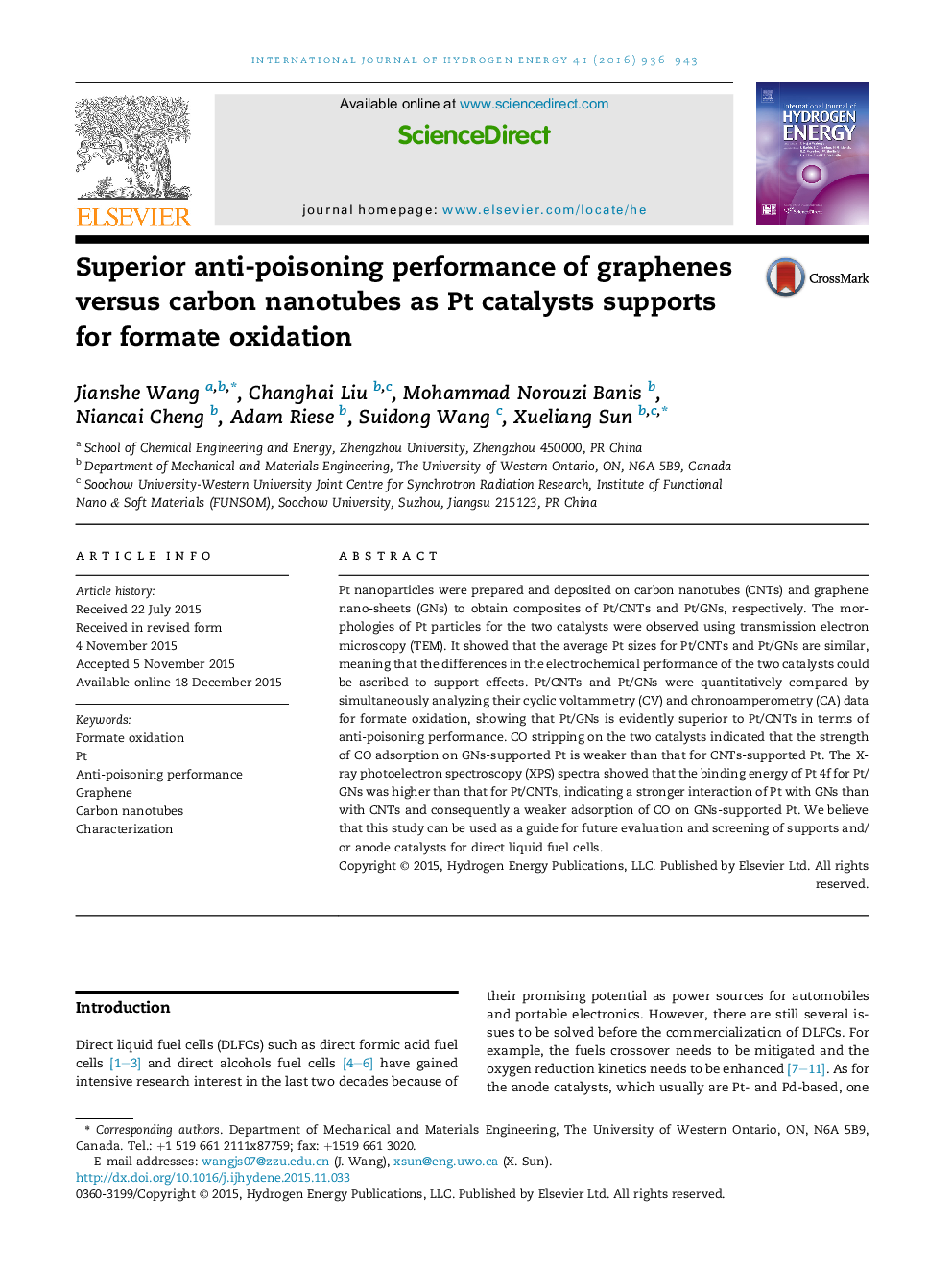| Article ID | Journal | Published Year | Pages | File Type |
|---|---|---|---|---|
| 7712579 | International Journal of Hydrogen Energy | 2016 | 8 Pages |
Abstract
Pt nanoparticles were prepared and deposited on carbon nanotubes (CNTs) and graphene nano-sheets (GNs) to obtain composites of Pt/CNTs and Pt/GNs, respectively. The morphologies of Pt particles for the two catalysts were observed using transmission electron microscopy (TEM). It showed that the average Pt sizes for Pt/CNTs and Pt/GNs are similar, meaning that the differences in the electrochemical performance of the two catalysts could be ascribed to support effects. Pt/CNTs and Pt/GNs were quantitatively compared by simultaneously analyzing their cyclic voltammetry (CV) and chronoamperometry (CA) data for formate oxidation, showing that Pt/GNs is evidently superior to Pt/CNTs in terms of anti-poisoning performance. CO stripping on the two catalysts indicated that the strength of CO adsorption on GNs-supported Pt is weaker than that for CNTs-supported Pt. The X-ray photoelectron spectroscopy (XPS) spectra showed that the binding energy of Pt 4f for Pt/GNs was higher than that for Pt/CNTs, indicating a stronger interaction of Pt with GNs than with CNTs and consequently a weaker adsorption of CO on GNs-supported Pt. We believe that this study can be used as a guide for future evaluation and screening of supports and/or anode catalysts for direct liquid fuel cells.
Related Topics
Physical Sciences and Engineering
Chemistry
Electrochemistry
Authors
Jianshe Wang, Changhai Liu, Mohammad Norouzi Banis, Niancai Cheng, Adam Riese, Suidong Wang, Xueliang Sun,
